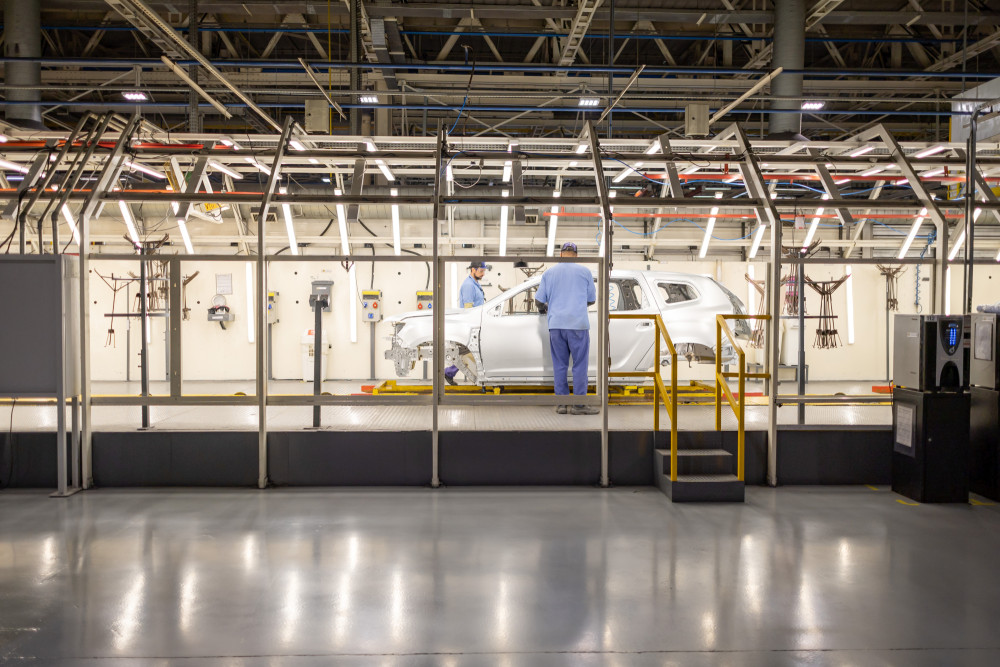Renault’s New Auto 3D Printing Material is Adaptive, Light, and Recyclable
120-year-old car brand Renault (EPA: RNO) has teamed up with the French Alternative Energies and Atomic Energy Commission (CEA) to develop a new 3D printing material. This innovative material is designed to manufacture components with adaptive mechanical behavior and enhanced performance. Renault aims to use it to make seats, backrests, armrests, and center consoles, parts that traditionally require a mix of several materials.
After two years of research and testing, Renault and the CEA ended up with over ten patents and a new material composed of a complex mesh structure. Described as powerful, lighter, and customizable, the unnamed new material is made from thermoplastic polyurethane (TPU) and is also recyclable. The team used digital methods and tools to design a strategically organized structure.
In the mesh-like structure they have created, each individual strand can be designed and adjusted in three dimensions. This allows them to create complex, multi-layered networks within the material, where each layer (or stratum) can have its own specific function and properties. Essentially, they can tailor the structure at a very detailed level to achieve different characteristics and behaviors in different parts of the material.
Although the design process is more complex, the resulting 3D printed parts are monolithic and made from a single material, making them easier to produce. These components can be created in a single 3D printing operation without the need for assembly, which minimizes the carbon footprint and generates no scrap. This efficiency not only streamlines manufacturing but also contributes to environmental sustainability by reducing waste.
Applying this innovative material to car seats, for example, offers exciting possibilities. Renault says the seats can become lighter by about 30% and thinner, yet they do not compromise on comfort, cushioning, or support. Unlike traditional materials like fabrics, foams, and reinforcements, this single material can be engineered to provide superior comfort levels. The customization goes further, allowing the seat to be tailored to the driver’s body shape, with different areas of the seat adjusted to meet individual pressure needs, improving comfort and support and making each car interior unique and personalized to the owner’s taste and style.
While Renault hasn’t explicitly addressed this possibility, the use of this innovative new material could initially be more suited to its high-end models, especially where customization and advanced features are more common, such as its Alpine brand known for producing high-performance sports cars, or its electric vehicles (EVs) like the Megane E-Tech Electric and Renault 5 Electric planned for release which could include high-end variants or features. The technology to produce seats that are 30% lighter and thinner yet offer enhanced comfort and customization sounds like it would be a premium feature. Therefore, it’s likely that Renault would first introduce this material in their luxury or high-end car lines, where buyers expect advanced technology and are willing to pay for more comfort and customization. However, over time, and as the manufacturing process becomes more streamlined and costs decrease, this technology could make its way and be integrated into more affordable car models, which is one of the biggest profit drivers for the brand.
“The almost total freedom of design, the savings in materials and weight, the integration of functions and the reduction in manufacturing times all mean that additive manufacturing is a sector strongly supported by the CEA. This project with Renault Group confirms the strength of this discipline, which focuses on the development of new materials architected through design, their characterisation, and their integration into applications” said François Legalland, CEO of CEA’s Laboratory for Innovation in New Energy Technologies and Nanomaterials (Liten), which focuses on developing new technologies related to energy, nanomaterials, and sustainable solutions.
Renault is not new to additive manufacturing. In fact, for years, the company has been using the technology to create tooling, prototype parts, and spare parts, as well as interior 3D printed accessories for its recently revealed 2025 Renault 5 E-Tech Electric. At the Ayrton Senna industrial complex in Brazil, the company even boasts a 3D printing center that produces over 10,000 parts a year. These parts are used not only in the manufacturing process but also to carry out a range of tests before the start of production. Now, with the lattice structure developed in collaboration with the CEA, additive manufacturing in Renault’s factory could move much faster than before, helping the company transform various aspects of the vehicle interior, making them more interactive and personalized.
Subscribe to Our Email Newsletter
Stay up-to-date on all the latest news from the 3D printing industry and receive information and offers from third party vendors.
Print Services
You May Also Like
3D Printing Grows to $15.9B in 2024 Amid Shifting Industry Dynamics
The global additive manufacturing (AM) market reached $15.9 billion in calendar year 2024, according to “Q4 2024 3DP/AM Market Data and Forecast” from Additive Manufacturing Research (AM Research). Despite a...
Low-cost “Suzy” Polymer Powder 3D Printer is Faster and Cheaper than Past Models
Polish laser powder bed fusion (LPBF) firm Sinterit has released a follow-up to its predecessors, Lisa and Nils, called Suzy, a $19,490 printer equipped with a 30W fiber diode laser....
BellaSeno’s 3D Printed Breast Implants Keep Shape with 87% Fat Volume, Avoids Silicone Risks
At a medical conference in Austin this week, a new kind of breast implant took center stage. It is not made from silicone but from a 3D printed, fully resorbable...
Australia’s Untapped Potential as a Disruptive Innovator: SPEE3D CTO Steven Camilleri Explains Why He Wants to Make Stuff There
When I first met Steven Camilleri in 2023, the CTO of additive manufacturing (AM) OEM SPEE3D shared a quote with me from Clayton Christensen, the late Harvard professor who popularized...





























